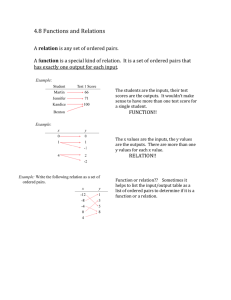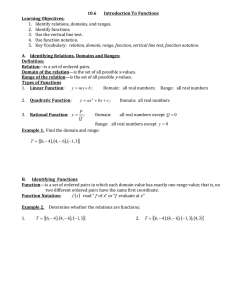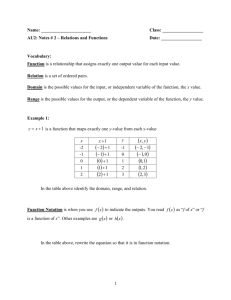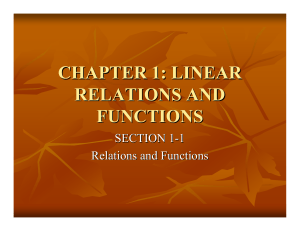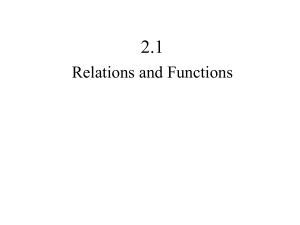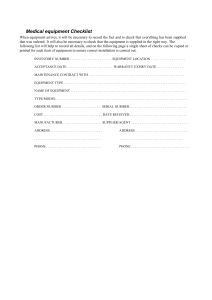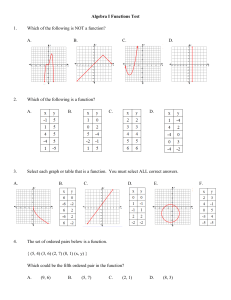3.5 Introduction to Functions and Functional Notation
advertisement
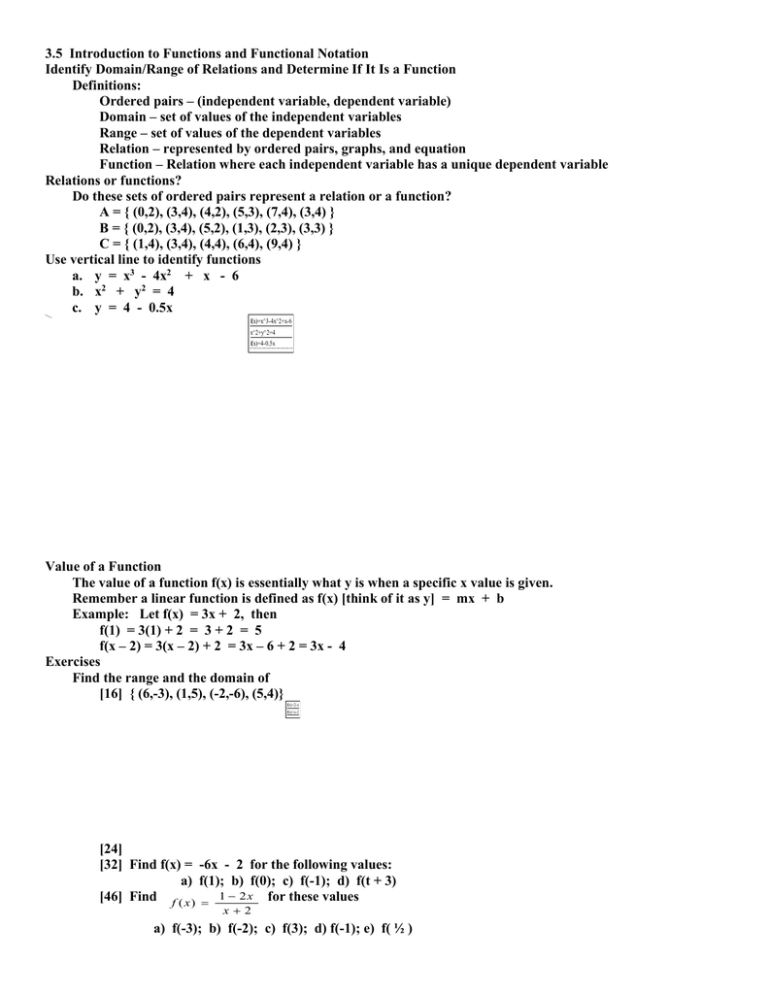
3.5 Introduction to Functions and Functional Notation
Identify Domain/Range of Relations and Determine If It Is a Function
Definitions:
Ordered pairs – (independent variable, dependent variable)
Domain – set of values of the independent variables
Range – set of values of the dependent variables
Relation – represented by ordered pairs, graphs, and equation
Function – Relation where each independent variable has a unique dependent variable
Relations or functions?
Do these sets of ordered pairs represent a relation or a function?
A = { (0,2), (3,4), (4,2), (5,3), (7,4), (3,4) }
B = { (0,2), (3,4), (5,2), (1,3), (2,3), (3,3) }
C = { (1,4), (3,4), (4,4), (6,4), (9,4) }
Use vertical line to identify functions
a. y = x3 - 4x2 + x - 6
b. x2 + y2 = 4
c. y = 4 - 0.5x
y
f(x)=x^3-4x^2+x-6
x^2+y^2=4
f(x)=4-0.5x
x
-7
-6
-5
-4
-3
-2
-1
1
2
3
4
5
6
7
Value of a Function
The value of a function f(x) is essentially what y is when a specific x value is given.
Remember a linear function is defined as f(x) [think of it as y] = mx + b
Example: Let f(x) = 3x + 2, then
f(1) = 3(1) + 2 = 3 + 2 = 5
f(x – 2) = 3(x – 2) + 2 = 3x – 6 + 2 = 3x - 4
Exercises
Find the range and the domain of
[16] { (6,-3), (1,5), (-2,-6), (5,4)}
y
f(x)=2-x
f(x)=x-2
x
-5
-4
-3
-2
-1
1
2
3
4
5
[24]
[32] Find f(x) = -6x - 2 for the following values:
a) f(1); b) f(0); c) f(-1); d) f(t + 3)
[46] Find f ( x ) 1 2 x for these values
x2
a) f(-3); b) f(-2); c) f(3); d) f(-1); e) f( ½ )



